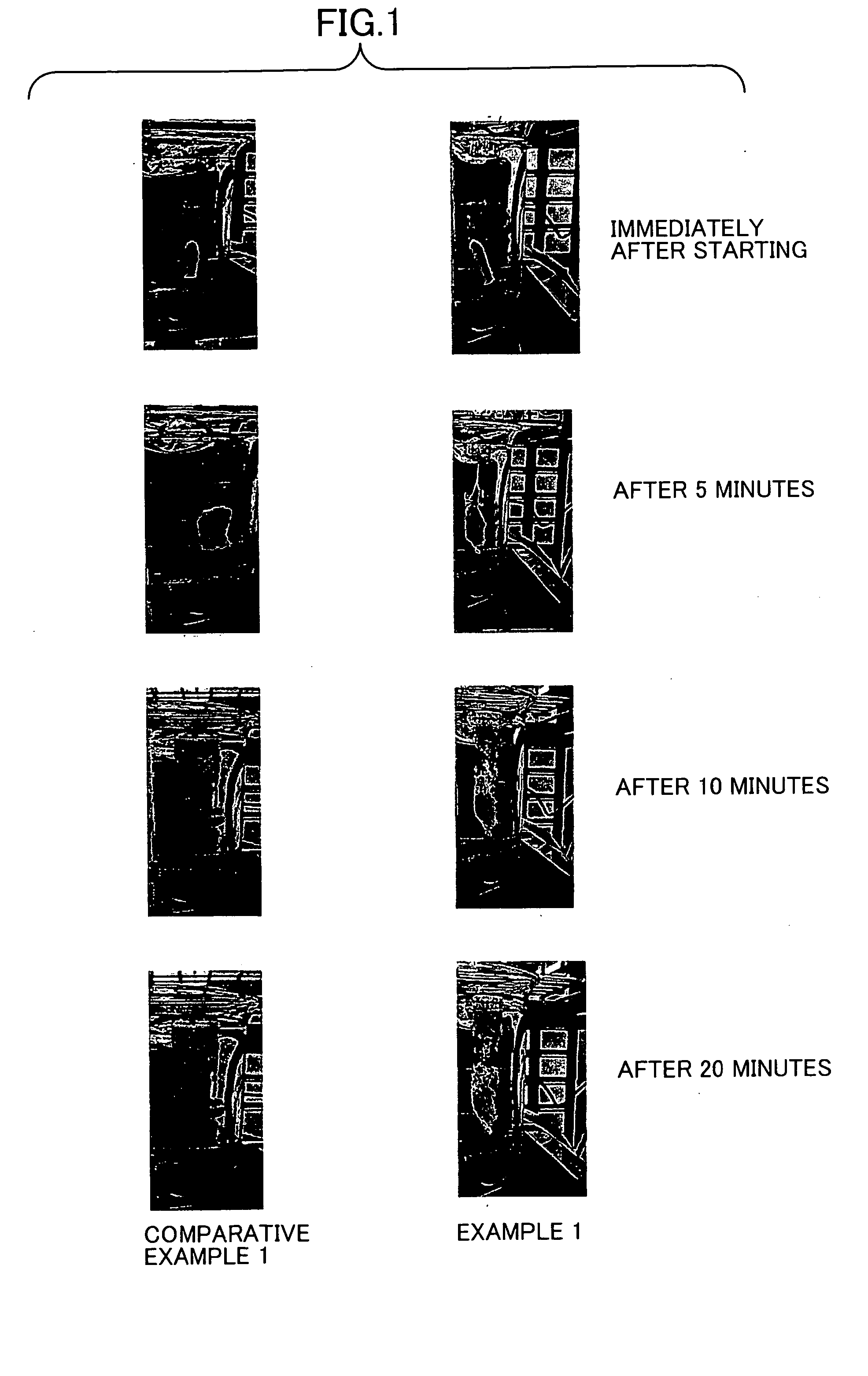Pharmaceutical preparation for rectal administration
a rectal and drug technology, applied in the direction of suppositories, organic active ingredients, drug compositions, etc., can solve the problems of reducing the amount of drug sustained-release carriers present, reducing the amount of drug which should be released from the drug sustained-release carriers to the affected region of the rectum, and reducing the frequency of preparation administration. , to achieve the effect of suppressing side effects and reducing the frequency of preparation administration
- Summary
- Abstract
- Description
- Claims
- Application Information
AI Technical Summary
Benefits of technology
Problems solved by technology
Method used
Image
Examples
example 1
[0038] Sixty mg of lidocaine hydrochloride which was a drug to be supported on a porous microparticulate carrier was dissolved in 120 ml of 70% ethanol, mixed well with 80 mg of light silicic acid anhydride which was a porous microparticulate carrier (Adsolider 101: Freund Corporation, 3.5 μm of the particle size, 300 m2 / g of the specific surface area, 3.4 mL / g of the absorbability of oil), passed through a Japanese Pharmacopoeia standard No. 50 sieve, and dried by blowing air at 70° C. for 360 minutes. The resulting drug-supported particles (140 mg) and an ethanol solution of a water-soluble polymer wherein 20 mg of hydroxypropylcellulose (H.P.C-L: Nippon Soda) had been dissolved in 120 mg of 95% ethanol were mixed well, passed through the No. 50 sieve to be of 10 μm of the mean particle size, and then dried by blowing air at 70° C. for 360 minutes to yield coated drug-supported particles. 1519 mg of Witepsol W-35, i.e. a base, was heated (at 50 to 60° C.) to dissolve and then 10 m...
example 2
[0039] Sixty mg of lidocaine hydrochloride which was a drug to be supported on a porous microparticulate carrier was dissolved in 120 ml of 70% ethanol, mixed well with 80 mg of magnesium aluminometasilicate which was a porous microparticulate carrier (Neusilin UFL2: Fuji Chemical Industry, 1.6 μm of the particle size, 260 m2 / g of the specific surface area, 3.2 mL / g of the absorbability of oil), passed through the No. 50 sieve, and dried by blowing air at 70° C. for 360 minutes. The resulting drug-supported particles (140 mg) and an ethanol solution of a water-soluble polymer wherein 20 mg of hydroxypropylcellulose (H.P.C-L: Nippon Soda) had been dissolved in 120 mg of 95% ethanol were mixed well, passed through the No. 50 sieve to be of 10 μm of the mean particle size, and then dried by blowing air at 70° C. for 360 minutes to yield coated drug-supported particles. Further, the similar procedures as those in Example 1 were repeated to obtain the suppository of the present invention...
example 3
[0040] Sixty mg of lidocaine hydrochloride which was a drug to be supported on a porous microparticulate carrier was dissolved in 120 ml of 70% ethanol, mixed well with the mixture of 50 mg of light silicic acid anhydride (Adsolider 101: Freund Corporation, 3.5 μm of the particle size, 300 m2 / g of the specific surface area, 3.4 mL / g of the absorbability of oil) and 30 mg of magnesium aluminometasilicate (Neusilin UFL2: Fuji Chemical Industry) which were porous microparticulate carriers, passed through the No. 50 sieve, and dried by blowing air at 70° C. for 360 minutes. The resulting drug-supported particles (140 mg) and an ethanol solution of a water-soluble polymer wherein 20 mg of hydroxypropylcellulose (H.P.C-L: Nippon Soda) had been dissolved in 120 mg of 95% ethanol were mixed well, passed through the No. 50 sieve to be of 10 μm of the mean particle size, and then dried by blowing air at 70° C. for 360 minutes to yield coated drug-supported particles. Further, the similar proc...
PUM
| Property | Measurement | Unit |
|---|---|---|
| viscosity | aaaaa | aaaaa |
| viscosity | aaaaa | aaaaa |
| viscosity | aaaaa | aaaaa |
Abstract
Description
Claims
Application Information
 Login to View More
Login to View More - R&D
- Intellectual Property
- Life Sciences
- Materials
- Tech Scout
- Unparalleled Data Quality
- Higher Quality Content
- 60% Fewer Hallucinations
Browse by: Latest US Patents, China's latest patents, Technical Efficacy Thesaurus, Application Domain, Technology Topic, Popular Technical Reports.
© 2025 PatSnap. All rights reserved.Legal|Privacy policy|Modern Slavery Act Transparency Statement|Sitemap|About US| Contact US: help@patsnap.com


